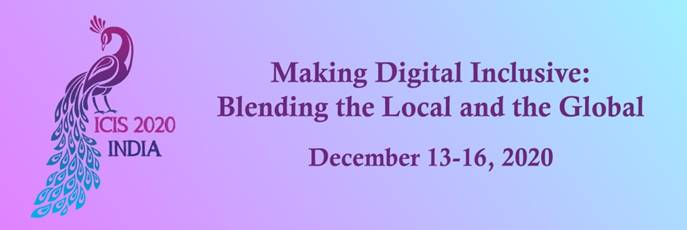Digital Innovation, Entrepreneurship and New Business Models
Loading...
Paper Type
Complete
Paper Number
2123
Description
In a world where hypercompetition has become more prevalent, understanding what drives this phenomenon is of great interest to IS and Strategy scholars. The modularization of resources driven by the digitalization of products and services could be a factor that drives hypercompetition. In this paper, we studied the phenomenon by examining industry average performance and ranking changes, and developed propositions generated from simulation experiments with an extended NK fitness landscapes model. In the extended NK model, firms are able to make five types of innovation adaptation decisions: experiential search, adding or dropping resources, borrowing a component from another firm or switching partners for sourcing components. Theoretical propositions posit the relationship between four factors (resource modularization, innovation power, cost and resource interdependency) and the various industry-level outcomes (average firm fitness, performance rank changes, and firm sizes) related to hypercompetition.
Recommended Citation
Pang, Hangzhi and Hahn, Jungpil, "Resource Modularization and Digitalization in a Hypercompetitive Landscape" (2020). ICIS 2020 Proceedings. 12.
https://aisel.aisnet.org/icis2020/digital_innovation/digital_innovation/12
Resource Modularization and Digitalization in a Hypercompetitive Landscape
In a world where hypercompetition has become more prevalent, understanding what drives this phenomenon is of great interest to IS and Strategy scholars. The modularization of resources driven by the digitalization of products and services could be a factor that drives hypercompetition. In this paper, we studied the phenomenon by examining industry average performance and ranking changes, and developed propositions generated from simulation experiments with an extended NK fitness landscapes model. In the extended NK model, firms are able to make five types of innovation adaptation decisions: experiential search, adding or dropping resources, borrowing a component from another firm or switching partners for sourcing components. Theoretical propositions posit the relationship between four factors (resource modularization, innovation power, cost and resource interdependency) and the various industry-level outcomes (average firm fitness, performance rank changes, and firm sizes) related to hypercompetition.
When commenting on articles, please be friendly, welcoming, respectful and abide by the AIS eLibrary Discussion Thread Code of Conduct posted here.


